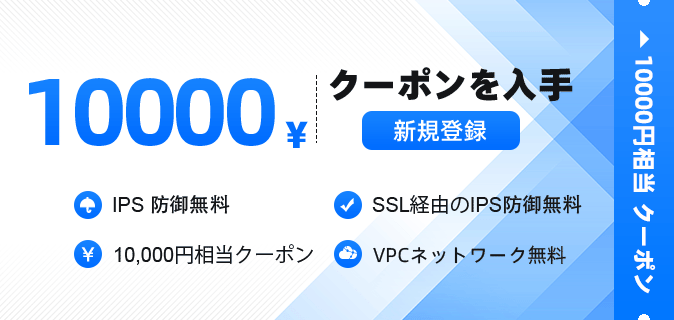JSFチュートリアル
JSFチュートリアルへようこそ。Java Server Faces(JSF)テクノロジーは、UIコンポーネントの再利用により、ユーザーインターフェースコンポーネントの作成を容易にするフロントエンドフレームワークです。JSFは、プレゼンテーション、コントローラー、およびビジネスロジックを分離するモデルビューコントローラーパターン(MVC)に基づいて設計されています。
JSF チュートリアル
最近、私はたくさんのJSFチュートリアルを書いてきたので、このJSFチュートリアルは、JSFフレームワークを学ぶために順番にすべてのチュートリアルを進めることができるインデックスの投稿です。これらのほとんどのJSFチュートリアルには、ダウンロード可能なプロジェクトのzipファイルが付属しており、例を通して学ぶためにいくつかの変更を加えることができます。
-
- 初心者向けのJSFチュートリアル
-
- JSFフレームワークを始めるためのパーフェクトなチュートリアルです。基本的な詳細をすべて取得し、最初のMavenベースの「Hello World」JSFプロジェクトを作成します。JSFフレームワークの基本的な知識がある場合は、スキップすることもできます。しかし、初心者チュートリアルから始めてさらに機能を学ぶ方法が常に最適です。
Primefacesを使用した初心者向けJSFチュートリアル
PrimefacesはJSFの仕様の中で最も人気のある実装の一つです。Primefacesに関する多くの投稿を公開してきましたが、この投稿ではJSFアーキテクチャもカバーしています。他のJSFの実装もUIを重視したプロジェクトを作成するために使用できる点を理解するために、ぜひ読んでみることをお勧めします。
JSFビューページコンポーネント – ラベル、画像、ボタン、テキストフィールド
JSFビューページの初心者向け投稿です。ラベル、画像、ボタンなどのシンプルなコンポーネントを追加し、簡単にバックエンドの管理ビーンと結びつける方法を学びます。
JSFリソースバンドルの例に関するチュートリアル
UIのラベル、日付、ステータスメッセージなどのUIテキスト要素をページにハードコーディングする代わりに、別のプロパティファイルに格納する現象をリソースバンドルと呼びます。デフォルトでは、JSFはコンテキストに応じて、フィールドタイプやフィールド長のバリデーションなどのいくつかの標準エラーメッセージを提供します。このチュートリアルでは、プロジェクトでリソースバンドルを使用してローカライゼーションを行い、リソースバンドルファイルを使用して標準JSFエラーメッセージ用のカスタムメッセージを提供する方法について説明します。
JSFエラーメッセージのチュートリアル
この投稿では、デフォルトのJSFバリデータを使用してユーザーに組み込みのエラーメッセージを表示する方法を学びます。また、JSF HTMLタグの使用例も簡単に紹介します。
JSFページナビゲーションのチュートリアル
ページナビゲーションは、ボタンをクリックしたりリンクをクリックしたりするイベントに基づいてページをリダイレクトすることです。ページナビゲーションの定義方法はさまざまあります。これには、「送信ボタンのアクション属性にページ名を指定する」、「管理ビーンでページを指定する」、「faces-config.xmlでナビゲーションを指定する」、「条件に基づいてナビゲーションを定義する」などがあります。これらについて例を交えながら学ぶことができます。
JSF UIコンポーネントタグの例についてのチュートリアル
JSFはコンポーネントベースのフレームワークであり、JSFのパワーは管理ビーンと容易に統合できるコンポーネントタグにあります。この投稿では、id、for、value、style required、sizeなどのJSF HTMLタグで使用される異なる属性について説明します。
JSFフォームコンポーネントの例についてのチュートリアル
フォームコンポーネントは、ビジネスシナリオを実装するモデルに送信するためのフィールドのコレクションとデータと送信機能です。フォームコンポーネントはJSFでよく使用されるもので、ほとんどのWebアプリケーションでは、ログイン、登録、データベースへの値の挿入または更新など、ユーザーが送信したデータを扱います。この投稿では、JSFページでフォームコンポーネントを使用する方法と、例題プロジェクトにおける異なる属性について説明します。
JSFテキストコンポーネントの例についてのチュートリアル
JSFテキストコンポーネントを使用すると、Webアプリケーションの形式でデータの追加、表示、編集ができます。JSFテキストコンポーネントには、ラベル、テキストフィールド、テキストエリア、パスワードなどが含まれます。この投稿では、これらのタグの使用方法について、例題プロジェクトを使用して学ぶことができます。
JSFコマンドコンポーネントタグの例
JSF Command components are used for performing action and navigation in the JSF pages. This post explains about the h:commandButton and h:commandLink tags with example project.
- JSFのdataTableタグの例についてのチュートリアル
The data bound table components are responsible for displaying the relational data in a tabular format. The h:dataTable tag is used for displaying the data components. The h:column tag iterates over each record in the data source displayed in rows. This is a very important component tag and you should understand it's usage and working carefully through the example project in the post.
- JSFのselectManyListBoxタグの例
JSF allows users to select multiple values for a single field with the help of h:selectManyListBox tag which corresponds to select tag in standard HTML. This post explains it's usage and different attributes of this tag with a working example.
- JSFのFaceletタグの例のチュートリアル
JSF provides a special set of tags that gives the flexibility to manage common tags/parts in one place for more than one application. These tags allow us to create a common layout that can be used across applications. These are called facelets tags and this post explains about different facelets tags in detail with working example code.
- JSFのイベントリスナーモデルの例
JSF Event and Listener model is based on the JavaBeans Specification. An event is defined as a signal triggered based upon the user actions such as click of button, hyperlink, changing the input value etc. JSF tells the component to invoke the appropriate listener class that process the event generated by the user. This article explains about different events with example projects.
- JSFフォームバリデーションの例
Form validations are common features in almost all web frameworks. JSF validation model defines a set of standard classes for validating the UI components. The JSF library defines a group of core tags that corresponds to `javax.faces.validator.Validator` implementations. Apart from the standard error messages validation model allows us to define the custom validations. Validations in JSF can be categorized into Imperative and Declarative.
- JSFのナビゲーションルールチュートリアル
Navigation rules specifies the navigation between the pages on click of button or hyperlink. Navigation can be specified in terms of the logical outcome such as success, failure or through action method. Navigation rules can be specified in faces-config.xml with the help of navigation-rule tag.
- JSFのアクションメソッドナビゲーションの例
Navigations can also be handled in JSF by writing methods in the managed bean. These methods should be public, take no parameters and should returns an object or a view name. The method is invoked in the action attribute of the JSF page. You will learn about this way of navigation through example project in the post.
- JSFの式言語(EL)の例のチュートリアル
JSF Expression Language enables users to access the data dynamically from the JavaBeans components using various expressions. The EL supports the following kinds of expressions - Immediate value expressions or Deferred value expressions, Value expression or method expression and rvalue or lvalue expressions. Check out this post to understand about these in detail with example code.
- JSFのセッション管理、認証、ログインログアウトの例
Authentication mechanism allows users to have secure access to the application by validating the username and password. This tutorial shows you how to build session management with authentication in JSF application by using JSF view for login, DAO object, HttpSession for session management and JSF managed bean and mysql database.
- JSFとJDBCの統合の例についてのチュートリアル
Java Server Faces can be connected to database to perform operations on the data using JDBC API. This is a simple post where you will learn how to use JDBC API in a JSF based web application.
- JSFとSpring Frameworkの統合の例
JSF is a component based framework with great focus on user interfaces. Whereas Spring framework core principle is Dependency Injection. So it makes sense to integrate JSF with Spring framework where JSF will be used for user interfaces and Spring framework will be used for backend server side business logic. This is an important article where you will learn how to integrate both these great frameworks and using the best features of each one.
- JSF、Spring、Hibernateの統合に関するチュートリアル例
JSF, Spring Framework and Hibernate - these three frameworks can be used together to build stunning web application where JSF components provide stunning UI, Spring components provide loose coupling through dependency injection and Hibernate takes care of interaction with database.
- JSFのインタビューの質問と回答
Finally if you are going to an interview and expecting JSF interview questions, then make sure you go through there. There are more than 50 questions with detailed answers that touch all the areas of JSF framework and help you in getting ready for the interview.
JSFチュートリアルの索引ポストは以上です。新しいJSFチュートリアルの記事を書くたびに、リストに追加していきます。もしJSFの重要な機能を見逃していると思われる場合は、以下のコメントでお知らせいただければ、それについての投稿やリストへの追加を試みます。

